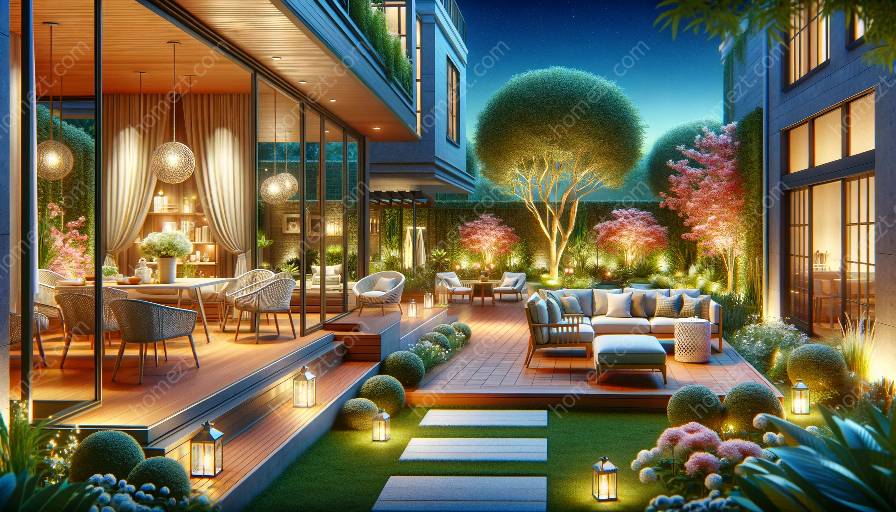Feng Shui, the ancient Chinese art of arranging and organizing spaces, has gained popularity in modern design practices. When applied to outdoor living spaces and garden design, Feng Shui principles can bring harmony, balance, and positive energy to the environment. Understanding these principles can help create an attractive and functional outdoor space that promotes well-being and relaxation.
Understanding Feng Shui Principles
Feng Shui revolves around the idea of creating balance and harmony in one's environment to promote the flow of energy, or chi. The main principles of Feng Shui that can be applied to outdoor living spaces and garden design include:
- Bagua Map: The Bagua Map is used to identify the areas of the outdoor space and align them with specific life aspects, such as career, family, wealth, and health. This mapping helps in determining the best placement and design of various elements within the outdoor space.
- Yin and Yang: Balancing the yin and yang energies in the outdoor space is essential. This involves combining contrasting elements, such as soft and hard surfaces, light and dark colors, and open and enclosed spaces, to create a harmonious atmosphere.
- Five Elements: The five elements of Feng Shui (wood, fire, earth, metal, and water) are integral to achieving balance and harmony. Incorporating these elements through natural materials, colors, and textures can enhance the outdoor space's energy flow.
- Flow of Chi: Ensuring that the chi energy can flow freely through the outdoor space is crucial. Avoiding obstacles in walkways, promoting natural ventilation, and creating visual pathways can optimize the chi flow.
Application of Feng Shui in Outdoor Living Spaces
Applying Feng Shui principles in outdoor living spaces and garden design involves attention to various elements, including:
- Layout and Placement: The placement of outdoor furniture, plants, and water features should align with the Bagua Map to optimize the energy flow in specific life areas. Careful consideration of the space's layout and configuration can create a harmonious environment.
- Natural Elements: Incorporating natural elements such as plants, stones, water, and wood can enhance the outdoor space's connection to nature and promote a sense of tranquility. Utilizing the five elements of Feng Shui can create a well-balanced and visually appealing landscape.
- Color and Texture: Choosing colors and textures that correspond to the five elements can influence the energy and mood of the outdoor space. Harmonizing the color palette and introducing tactile surfaces can evoke a sense of balance and vitality.
- Lighting: Proper outdoor lighting can contribute to the ambiance and safety of the space. Balancing natural and artificial light sources can create a welcoming and calming atmosphere for outdoor activities and relaxation.
Integration with Garden Design and Interior Styling
Integrating the principles of Feng Shui in outdoor living spaces and garden design can complement interior design and styling, creating a seamless transition between indoor and outdoor spaces. Harmonizing the energy flow and aesthetic elements enhances the overall living experience.
Coherence with Garden Design:
Incorporating Feng Shui principles in garden design can unify the outdoor space with the surrounding landscape. Using the Bagua Map to guide the layout and choosing plants and features that correspond to the five elements can create a garden that promotes positive energy and harmony.
Seamless Transition with Interior Design:
By aligning the outdoor living space with interior design principles, a sense of continuity and balance can be achieved. Coordinating colors, textures, and decor elements between indoor and outdoor areas fosters a harmonious living environment.
Conclusion
Understanding and applying the principles of Feng Shui in outdoor living spaces and garden design can result in a cohesive and balanced environment that promotes well-being and harmony. By incorporating the concepts of energy flow, natural elements, and color harmony, outdoor spaces can become inviting retreats that seamlessly integrate with interior design and styling, creating a holistic living experience.


























